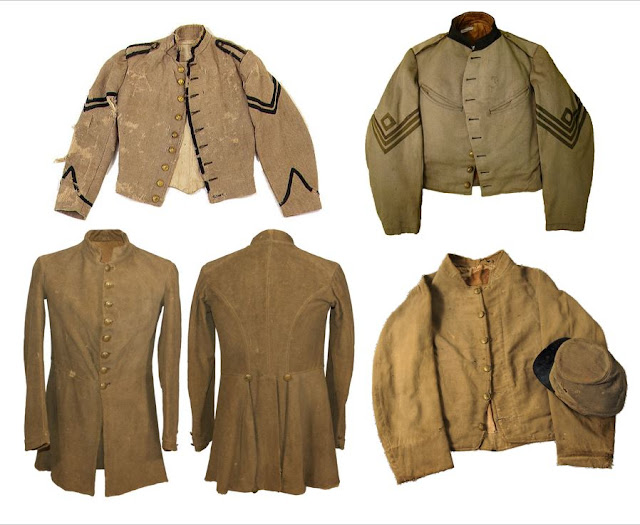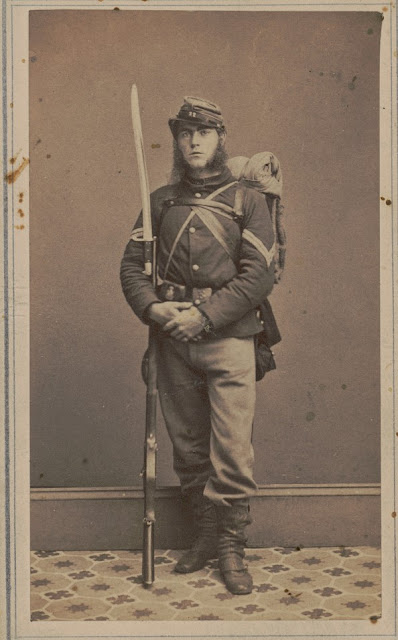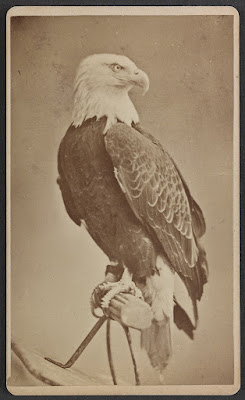The Battle Became Interesting in the Extreme: With the 84th Illinois on Lookout Mountain
The Chattanooga Campaign might not have been the hardest fought one the 84th Illinois ever participated in, but the scenery proved awe-inspiring as recalled by Lieutenant Lewis N. Mitchell of Co. A.
"The morning of November 25th dawned clear and beautiful but cold. We were at such an elevation that the surrounding country lay fair to view. Chattanooga, the Tennessee River in its devious course, and our camps; oh, how beautiful the sight! But what do we see to our left? The Rebel works and camps are in plain view and there are long lines of bluecoats advancing across the plain towards Missionary Ridge. Now we see their colors and now the boom of artillery and the rattle of musketry and they are hidden from view. The old flag waves from Lookout Point and cheer after cheer rolls off across the valley below," he wrote.
Lieutenant Mitchell’s diary of the Chattanooga campaign, featuring insights into the fighting on Lookout Mountain, Missionary Ridge, Ringgold Gap, and a visit to the Chickamauga battlefield, was published on the front page of the Christmas Day edition of the Monmouth Atlas from Monmouth, Illinois.
On the morning of November 23, 1863,
we were encamped at Whiteside, Tennessee. We had reveille at 5 a.m. and at 7
the bugle sounded to strike tents and we were soon packed and rationed for the
move. We marched at 10:30 a.m., taking the road leading to the point of Lookout
Mountain. We arrived within one mile of Lookout at dark and reported to General
Hooker. We camped in the valley at dark for the night after a march of 9 miles.
Reveille came at 4 a.m. on November 24th;
the morning was chilly, foggy, and sprinkling rain making it very disagreeable.
We moved at daylight to the creek west of Lookout and formed in line of battle with
Companies F and G thrown forward as skirmishers, advancing in line to within 30
yards of the Rebels outer rifle pits. This brought on a brisk engagement as
would be supposed. The regiment waded a pond in the move, varying in depth from
2-4 feet and cold. Walker’s division of Rebels occupied Lookout and our muskets
soon brought out a regiment or two of them to prevent our crossing the creek.
We constructed rude breastworks of
logs and stone, felling some trees. Our sharpshooters and skirmishers kept them
close in their works and along the railroad the action lasted in this shape for
some 2 hours when a division of the 15th Corps had succeeded (by
drawing their attention there) in flanking them. The battle then became
interesting in the extreme as the whole field could be taken in one view.
Musketry and artillery were both freely used and when the Rebels found they
were flanked with our fire in front, they had to lie still in their pits and be
taken prisoners. They did not try to retreat in line at all and it became a rout
or skedaddle and our regiment alone took 126 prisoners with 4 commissioned
officers. At the top of the ridge, they railed and formed a new line and held
us at bay till midnight when they got up and dusted again. We remained in line
of battle that night. [To read more about the November 24th fighting on Lookout Mountain, please check out "The Flag Capturing Machine: The 149th New York and the Chattanooga Campaign," and "Breaking the Backbone of the Rebellion: An Iowan on Lookout Mountain."]
The morning of November 25th
dawned clear and beautiful but cold. We were at such an elevation that the
surrounding country lay fair to view. Chattanooga, the Tennessee River in its
devious course, and our camps; oh, how beautiful the sight! But what do we see
to our left? The Rebel works and camps are in plain view and there are long
lines of bluecoats advancing across the plain towards Missionary Ridge. Now we
see their colors and now the boom of artillery and the rattle of musketry and
they are hidden from view.
 |
| Colonel William Grose brigade commander |
Our loss was light on Lookout- about
150 in killed and wounded. Our prisoners number nearly 3,000 and 4 pieces of
artillery. The old flag waves from Lookout Point and cheer after cheer rolls
off across the valley below. Hooker is with us in person and orders a reconnaissance
towards Missionary Ridge. Our regiment moves out with our company (A) as
skirmishers. We moved over a low hill and the skirmishers capture 18 prisoners,
4 boxes of guns, clothing, meal, flour, beans, tents, officer’s mess boxes,
etc. that were left in their precipitous flight. A vast amount o stores are
burning near the Rebel stronghold.
Osterhaus’s division passes us on the
road to Rossville and the advance becomes engaged at the pass. At 3 p.m., we
drive them in in column, then move by the left flank and in 5 minutes we are
hotly engaged. The 9th Indiana and the 4th Iowa are in
the front line, the 84th Illinois and 36th Indiana in the
second line. We drive a whole brigade and they rally on another brigade of
Cheatham’s division. Hooker comes forward and says, “Don’t stand and quarrel with
them; go for them!” And they did go with the bayonet.
In the meantime, Osterhaus has pressed
is front around [page indistinct] and nearly a whole brigade surrender and
again no enemy confronts us. Our cheers ring over hill and dale. Our loss is
light- 2 killed, 4-5 mortally wounded, with some 12-15 slightly wounded. The
Rebels left 28 dead on the field and over 30 wounded. We slept on the field but
the roar of battle far to our left did not cease till midnight.
Reveille was at early dawn on November
26. All was quiet and the sun rose with a red glare through the smoke of the
battle and camps. It is a day set apart for Thanksgiving, but a day of sorrow
to many it really is. But we here do feel truly thankful for victory although
it takes valuable lives to win it. Our form of government is worth fighting for
and must be preserved for posterity. We moved forward towards Ringgold at 9 but
were much delayed by bad roads and destroyed bridges. At 11 we fall in with the
enemy’s rear guards and had a warm skirmish, capturing 4 pieces of artillery,
10 wagons, caissons, etc. We went into bivouac in line at 1 a.m.
Scattering shots all night prevented
sleep and we had reveille at 4 a.m. on November 27. Moving out at dawn, we
found broken caissons, wagons, cartridge boxes, guns, etc. along the road. Our
advance met the enemy one mile from Ringgold at 9 a.m. and skirmished through
the town. We saw their lines in a strong position on a hill called Taylor’s
Ridge. It was Cleburne’s division and one brigade of Walker’s.
 |
| Tattered colors of the 84th Illinois |
We drove in their skirmishers but we were suffering, they
having us at a disadvantage. At 12 noon, our artillery came up on the run and took
position. Generals Grant, Hooker, Palmer, Osterhaus, Geary, and others are at
the head of our column. The 14th Corps is pressing in towards their
rear and flank; the 12th Corps on the other flank. The Rebels
discovered the move and lit out on the double quick and saved their bacon by
destroying the railroad bridges. Our loss was 37 killed and about 100 wounded;
the Rebels left 26 dead on the field and 60 wounded in our hands, taking many
with them. [To learn more about the fighting at Ringgold Gap, please check out
these posts: “Its Glory Seemed to Have Parted-The 7th Ohio at
Ringgold,” “No Valor Could Have Rescued Them: The 76th Ohio Loses
Its Regimental Colors at Ringgold Gap,” and “To Falter Would Disgrace the Name
of the Old 76th Ohio."]
During the skirmishing, one woman called to the Rebels to
stand their ground, calling our men “sons of bitches” and other names. Her
house was fired and her husband found killed in the Rebel skirmish line. We
took a vast amount of forage, corn, flour, meals, etc., there being two mills
at that place. They were selling meal at 50 cents per pound in Rebel money. We
took the engines to Chattanooga; we also took about 500 prisoners, many of them
coming in voluntarily.
November 28th was rainy and cold. We made a
reconnaissance and found the Rebels were destroying the railroad; we came back
and destroyed one mile to help them. The next day we found the ground frozen
and it thawed but little through the day. We laid in camp all day. On November
30, we marched out at 3:30 p.m., taking the road to the Chickamauga
battlefield. We arrived at Reed’s Bridge (destroyed by Wilder on September 18)
at dark and bivouacked for the night. [Click here to visit my Battle of Chickamauga page which features dozens of posts about the bloodiest battle
fought in the western theater.]
On December 1, we marched at sunrise and by 10 a.m. found
ourselves where the extreme left of the Rebel army lay on the morning of
September 19th, that day long to be remembered by Americans where
our small army was torn, mangled, and overpowered by an overwhelming force, but
not whipped. We passed up the road towards Chattanooga, over ground familiar to
the eye, heart, and mind.
At 11 a.m. we halted and sent details to all parts of the
field to bury the killed of the battle of 70 days before. We found many of our
men just as they had fallen, save the flesh and any little valuables they may
have had. Some were covered with leaves and a little dirt, but none were
entirely covered. Their own dead were well buried and many of them there were,
too, where the fighting was heaviest on Sunday the 20th.
Many of the trees were entirely cleared of bark by musketry, canister, shrapnel, and much timber felled by heavier metal, some trees as large as 22 inches through being cut down. The ladies of the state of Georgia have had a picnic on the field. It must have been a grand affair with the ghastly skulls of their countrymen staring at them and how many of their own flesh and blood were under that same sod. The women are the worst half of the rebellion. Many of our men's heads were cut off and their own correspondent to the Mobile papers says they were set up on stumps and logs. But enough of the field. We left the sickening scene at 3 and came back through Rossville on the Chattanooga road and went into camp at dark.
Source:
Letter from
First Lieutenant Lewis Nelson Mitchell, Co. A, 84th Illinois Volunteer
Infantry, Monmouth Atlas (Illinois), December 25, 1863, pg. 1











Comments
Post a Comment